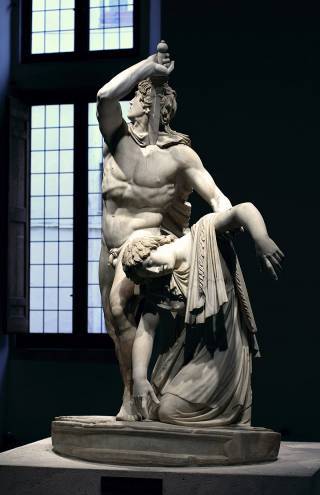
You are warmly welcome to attend the workshop organized by TRIVIUM (Tampere Centre for Classical, Medieval, and Early Modern Studies) with the theme “War and Violence as a Gendered Construction: Masculinity in Roman and Medieval Culture”, with Professor of Late Roman and Byzantine History Shaun Tougher from Cardiff University as one of the participants in this workshop. For a more detailed programme of the event please see below.
Place: Tampere University, TAU Pinni B3032 seminar room (20)
Time: 13 December, 11:00-16:00
Registration: If you plan to attend, or if there are any queries, please send a message to Jaakkojuhani.peltonen@tuni.fi or jussi.2.rantala@tuni.fi
(because of the coffee service, please inform of your attending until 9.12 so we can provide correct amount of refreshments)
PROGRAM
11.00-11.15 Welcome: Sari Katajala-Peltomaa (Research center TRIVIUM)
Jaakkojuhani Peltonen & Jussi Rantala (Tampere University)
11.15-11.45 Shaun Tougher (Cardiff University): War and Violence in Tenth-Century Byzantium: Gender in the History of Leo the Deacon
11.45-12.15 Katariina Mustakallio (Tampere University): War and Women in Livy
12.15-13.15 Lunch
13.15-13.45 Elin Sundman (University of Iceland): Masculinity and Patterns of Injury in Medieval Västerås
13.45-14.15 Jussi Rantala (Tampere University): War and Sexual Violence in Imperial Historical Narrative: Challenge to Roman Masculinity?
14.15-14.45 Coffee break
14.45-15.15 Jaakkojuhani Peltonen (Tampere University): Talk of viri fortes: Martial Masculinity in Roman Literature
15.15-15.45 Philip Line (University of Helsinki): Warrior societies and the Construction of the Male Ideal in the Early Middle Ages
15.45 Conclusion
In ancient and medieval culture “manliness” was often understood as an ability to demonstrate one’s braveness at war and eagerness to use violence in different situations. On the other hand, certain marginal groups, such as philosophers and Christians, often promoted more peaceful ideals of masculinity. Based on this, our workshop approaches martial masculinity as a social and cultural construct, which manifested itself not only at war, but also, for example, in public shows and domestic violence. Accordingly, the papers approach cultural basis of masculine violence from many different aspects. As we understand how martial masculinity was promoted in ancient and medieval Europe as a form of masculine hegemony, we can also understand the current practices of combining martial ideas and idea of manly aggressiveness to represent masculinity.
Workshop tuo yhteen sodankäynnin ja sukupuolittuneen väkivallan kulttuurista näkökulmaa tarkastelevia antiikin ja keskiajantutkijoita. Kun ymmärrämme, miten antiikin Roomassa ja keskiajan Euroopassa sotaisaa maskuliinisuutta ylläpidettiin hegemonisen maskuliinisuuden muotona, voimme paremmin ymmärtää sitä, miten sotaisuutta ja miesten aggressiivisuutta yhdistetään maskuliinisuuteen edelleen. Antiikin ja keskiajan maailmassa ”miehuullisuus” miellettiin miehen kyvyksi osoittaa urhoollisuutensa sodassa ja turvautua väkivaltaan eri tilanteissa. Toisaalta marginaaliryhmät, kuten filosofit ja kristityt, markkinoivat rauhanomaisempia ja väkivallasta pidättäytymistä korostavia maskuliinisuuden ideaaleja. Workshop lähestyykin sotaisaa ja väkivaltaista maskuliinisuutta sosiaalisesti ja kulttuurisesti rakennettuna ilmiönä, joka näkyi paitsi sodissa, myös esimerkiksi julkisissa näytöksissä sekä katu- ja perheväkivallassa. Seminaarin esitykset tarkastelevat miehisen väkivallan kulttuurista perustelua näissä erilaisissa yhteyksissä.
